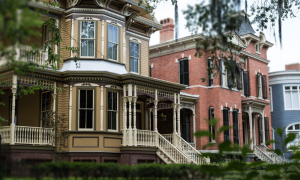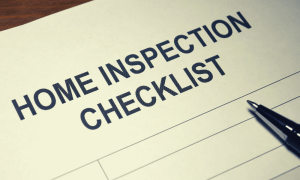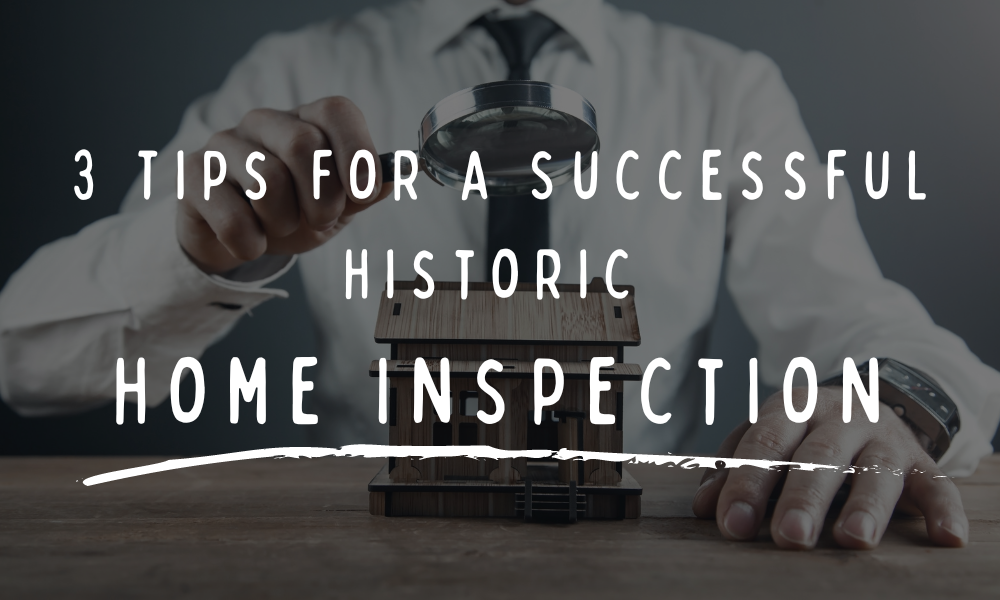Home inspections are the best defense against buying a historic property that’ll cost you a fortune in repairs.
But…
Property inspections are often deal killers. During real estate transactions, according to the National Association of Realtors, one in every 20 deals hit a dead end. And, a third of homes that don’t make it to a closing fall apart due to inspection-related issues.
Real estate appreciates in value. However, the physical structure of living in a historic home deteriorates naturally over time. This explains the need for proper home maiving in a historic home.
A home inspection involves physical and visual evaluation of a property for sale, from the roof to its foundation. Buying a home is a costly affair, probably the most expensive purchase you’ll ever make in your lifetime.
Why get an inspection on a historic property?
An inspection ensures that you invest in a property that won’t cost you a fortune in extensive repairs. It helps identify hidden issues for correction before they become costly repairs. You can save thousands of dollars through simple and timely repairs.
Apart from discovering problems before they deteriorate, the inspection also helps plan and budget for any building or remodeling projects you may need. You can also renegotiate contract terms or back out without losing your money based on home inspection findings.
Whether you’re a first-time home buyer or want to buy your second, third, or fourth property, here are tips to help you conduct a successful inspection before living in a historic home.

1. Prepare for home inspection and negotiations
Home buyers schedule a home inspection within 10 days after sending an offer to the home seller, and it’s been accepted. Your real estate agent can help you find a reliable and trustworthy home inspector.
A trustworthy realtor has lots of experience with home inspections and thus can help you prepare. The preparation process would include:
Understanding the most common home issues for maintenance in the area such as poor electrical wiring in historic homes, water leakage in basements, or pet-related problems in warm climates.
Creating a plan for repair requests; indicates whether you’ll do DIY repairs, hire contractors or provide repair credits to fix identified issues.
Determining how much you can leverage in the local real estate market either as a seller or buyer, and how fast buyers will want to buy your home.
Knowing how to differentiate major and minor home inspection findings, including the basis for negotiations (consider safety or heath threat issues vs. cosmetic repairs).
The best home listing agents don’t just sell properties, but also provide buyers with all the information they’ll need every step of the way. As a buyer, you learn more about the local housing market and how to target an out-of-market property.
2. Create a historic home inspection checklist
A home inspection checklist can help you evaluate and plan for a good maintenance service to protect your historic home. With the right checklist, your inspector can identify potential issues with the property.
You can also use it to schedule work, set priorities, and control the maintenance costs of your new home. Unlike buying a new home, repairing, restoring, and maintaining a historic home is cheaper in the long term.
The things an inspector is likely to include in the home inspection report may impact health, and safety or even violate a building code. So, what do home inspectors look for during an inspection? They include:

- Structural integrity
- Roof and roofing materials
- Water damage
- Exterior walls and interior spaces
- Faulty wiring
- Leaking or corroded plumbing issues
- Functionality and age of the HVAC
- Foundation stability
- Flooring quality
- Asbestos (visual inspection of asbestos fibers on exterior shingles and heating pipes), lead paint (lead paint testing and replacement of old windows) and noxious gases for safety from hazardous materials to human health.
Presence of oil tanks - Checking collapsed septic systems and damaged sewer pipes in waste systems.
3. Hire a reputable inspector with a specialization in historic homes
When planning to buy a historic home or property, opt for an inspector who focuses on assessing historic homes. Although a standard inspector is experienced in general home inspections, they may lack the specialty you need when assessing historic homes.
The standards and architecture used when building old homes were totally different from what you’ll find in modern homes. Therefore, an average inspector may not offer the experience your historic home needs.
If you’re planning to remodel or renovate the property, you’ll need a structural engineer or contractor to embark on the project.
Do your research well to find a trustworthy and reliable inspector with the right skills, experience, and knowledge in assessing old properties.
Although your realtor can recommend an inspector, find one on your own to access unbiased services concerning discovered issues. However, home inspection services don’t come cheap. Expect to pay extra for quality home inspection services.
A good inspector, according to the Historic Building Inspectors Association, has inspected a minimum of two old homes built prior to 1925 and has passed all modern buildings inspector exams.
The professional can also discuss the type of construction the historic home was subjected to and its potential for maintenance. A good inspector can also create a checklist for the home inspection and share with you tips on how to care for your new home.
Nachi.org and homeinspector.org are two good places to begin your search for a reputable home inspector.
With the right tips and a reputable home inspector experienced in evaluating historic homes, you’re on your way to a successful inspection of your old property. Prepare and plan well to make the most of a scheduled home inspection service.

